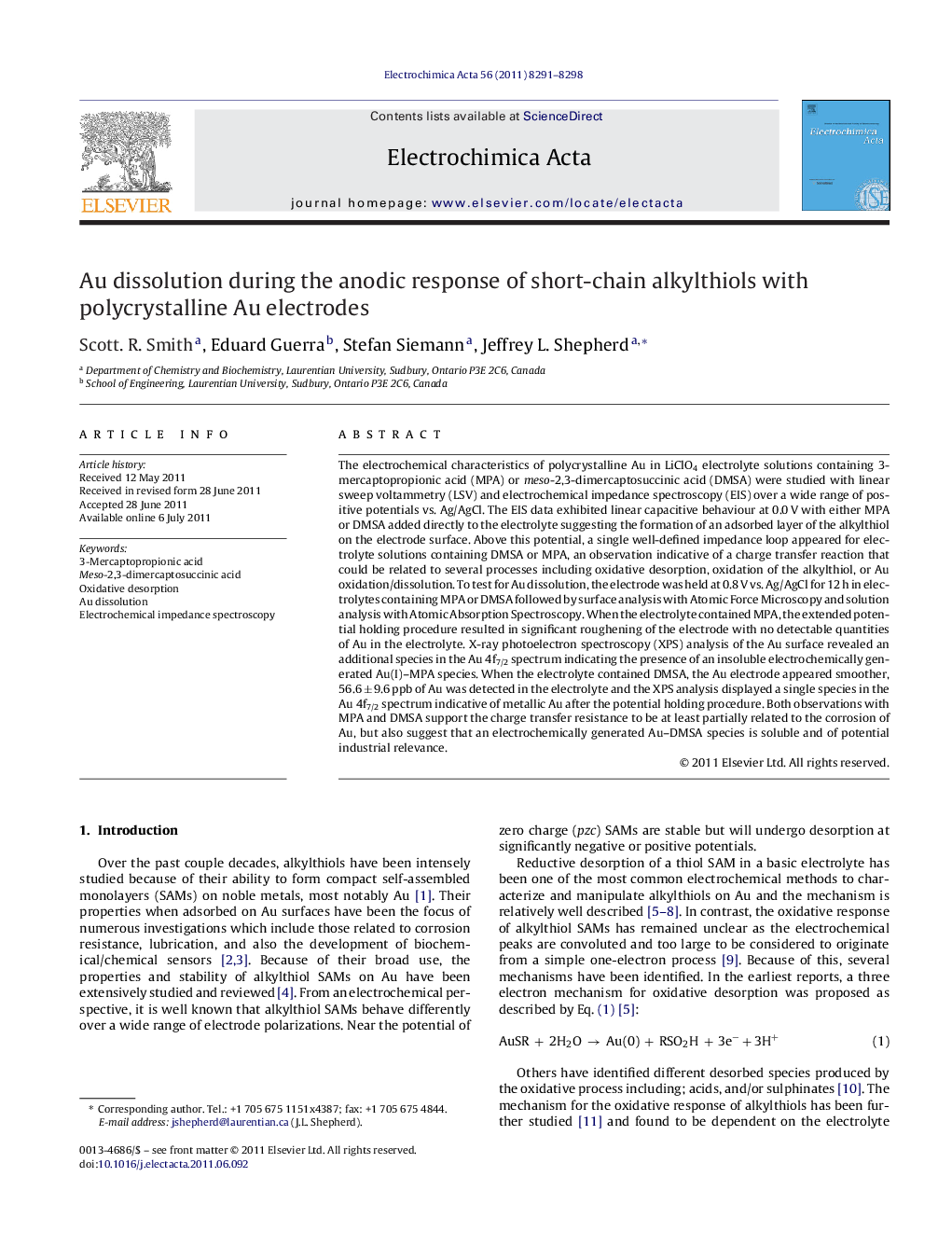| کد مقاله | کد نشریه | سال انتشار | مقاله انگلیسی | نسخه تمام متن |
|---|---|---|---|---|
| 189198 | 459676 | 2011 | 8 صفحه PDF | دانلود رایگان |

The electrochemical characteristics of polycrystalline Au in LiClO4 electrolyte solutions containing 3-mercaptopropionic acid (MPA) or meso-2,3-dimercaptosuccinic acid (DMSA) were studied with linear sweep voltammetry (LSV) and electrochemical impedance spectroscopy (EIS) over a wide range of positive potentials vs. Ag/AgCl. The EIS data exhibited linear capacitive behaviour at 0.0 V with either MPA or DMSA added directly to the electrolyte suggesting the formation of an adsorbed layer of the alkylthiol on the electrode surface. Above this potential, a single well-defined impedance loop appeared for electrolyte solutions containing DMSA or MPA, an observation indicative of a charge transfer reaction that could be related to several processes including oxidative desorption, oxidation of the alkylthiol, or Au oxidation/dissolution. To test for Au dissolution, the electrode was held at 0.8 V vs. Ag/AgCl for 12 h in electrolytes containing MPA or DMSA followed by surface analysis with Atomic Force Microscopy and solution analysis with Atomic Absorption Spectroscopy. When the electrolyte contained MPA, the extended potential holding procedure resulted in significant roughening of the electrode with no detectable quantities of Au in the electrolyte. X-ray photoelectron spectroscopy (XPS) analysis of the Au surface revealed an additional species in the Au 4f7/2 spectrum indicating the presence of an insoluble electrochemically generated Au(I)–MPA species. When the electrolyte contained DMSA, the Au electrode appeared smoother, 56.6 ± 9.6 ppb of Au was detected in the electrolyte and the XPS analysis displayed a single species in the Au 4f7/2 spectrum indicative of metallic Au after the potential holding procedure. Both observations with MPA and DMSA support the charge transfer resistance to be at least partially related to the corrosion of Au, but also suggest that an electrochemically generated Au–DMSA species is soluble and of potential industrial relevance.
► 3-Mercaptopropionic acid (MPA) or meso-2,3-dimercaptosuccinic acid (DMSA) mediated Au corrosion in aqueous electrolytes at anodic potentials.
► Au is roughened and passivated by an insoluble Au–MPA product.
► Au is leached into the aqueous electrolyte as a soluble Au–DMSA species (∼60 ppb, 12 h).
Journal: Electrochimica Acta - Volume 56, Issue 24, 1 October 2011, Pages 8291–8298